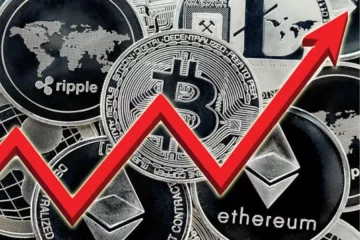The Rise and Fall of Bitcoin: Understanding the Volatility of Cryptocurrency

Volatility of Cryptocurrency
Understanding the volatility of Bitcoin
Bitcoin is a decentralized digital currency that operates without a central bank or administrator. It is a peer-to-peer network where transactions are verified and recorded in a public ledger called the blockchain. Bitcoin’s volatility refers to the rapid and frequent changes in its price, which can fluctuate by thousands of dollars within a single day. This volatility has been a major concern for investors and has led to debates about the future of cryptocurrency.
Factors that affect the price of Bitcoin
Several factors contribute to the volatility of Bitcoin, including supply and demand, media coverage, and government regulations. The limited supply of Bitcoin – only 21 million will ever exist – means that its value is determined by demand. When demand is high, the price of Bitcoin rises, and when demand decreases, the price falls. Media coverage also plays a role in the price of Bitcoin, as positive news can create a surge in demand and negative news can cause a decline. Government regulations also impact the price of Bitcoin, as restrictions on its use can affect demand.
The history of Bitcoin’s price fluctuations
Bitcoin’s price has been volatile since its inception in 2009, with significant price fluctuations occurring throughout its history. In 2017, Bitcoin’s price skyrocketed from around 20,000, before crashing down to around $3,000 in 2018. The price has since recovered, but remains highly volatile. The reasons for these price fluctuations are complex, but they can be attributed to a range of factors, including market sentiment, investor behavior, and technological developments.
The impact of regulations on Bitcoin’s price
Regulations have a significant impact on the price of Bitcoin, as government restrictions can affect demand and usage. In 2017, China banned initial coin offerings (ICOs) and shut down cryptocurrency exchanges, causing the price of Bitcoin to plummet. Similarly, in 2021, Tesla CEO Elon Musk announced that the company would no longer accept Bitcoin payments, citing environmental concerns. This announcement caused the price of Bitcoin to drop by over 10% in a single day.
The role of media coverage in Bitcoin’s price
Media coverage has played a significant role in the price of Bitcoin, with news outlets often reporting on major price movements and developments in the cryptocurrency market. Positive news, such as major companies accepting Bitcoin as payment, can create a surge in demand and drive up the price. Negative news, such as government crackdowns or security breaches, can cause a decline in demand and lower the price of Bitcoin. The media’s influence on Bitcoin’s price highlights the importance of being informed and up-to-date on developments in the cryptocurrency market.
Comparing Bitcoin’s volatility with traditional markets
Bitcoin’s volatility is often compared to that of traditional financial markets, such as stocks and bonds. While all markets experience some level of volatility, Bitcoin’s extreme price fluctuations are unique. However, it is important to note that Bitcoin is still a relatively new and disruptive technology, and its volatility may decrease as it becomes more mainstream and widely used.
Investing in Bitcoin: Risks and Rewards
Investing in Bitcoin can be highly risky, but also highly rewarding. Bitcoin’s volatility means that its price can rise or fall rapidly, and investors must be prepared for significant fluctuations in value. Additionally, the lack of regulation and oversight means that there is a higher risk of fraud and scams in the cryptocurrency market. However, for those who are willing to take the risk, Bitcoin can offer significant rewards, with some investors seeing massive returns on their investments.
Future predictions for Bitcoin
The future of Bitcoin and cryptocurrency is uncertain, with many experts offering differing opinions on its potential. Some see Bitcoin as a revolutionary technology that will completely change the way we conduct financial transactions, while others see it as a speculative bubble that is bound to burst. However, as more companies and institutions begin to accept Bitcoin as payment and as regulations become more established, it is likely that the volatility of the cryptocurrency market will decrease.
Conclusion
The rise and fall of Bitcoin has been a fascinating and often perplexing phenomenon, with its volatility causing both excitement and concern among investors and enthusiasts. While the future of Bitcoin is uncertain, it is clear that the cryptocurrency market is here to stay. As the technology continues to evolve and regulations become more established, the volatility of Bitcoin may decrease, making it a more stable and reliable investment option. However, for now, investors must be prepared for the rapid and frequent changes in Bitcoin’s price, and must approach investing in the cryptocurrency market with caution and awareness.









